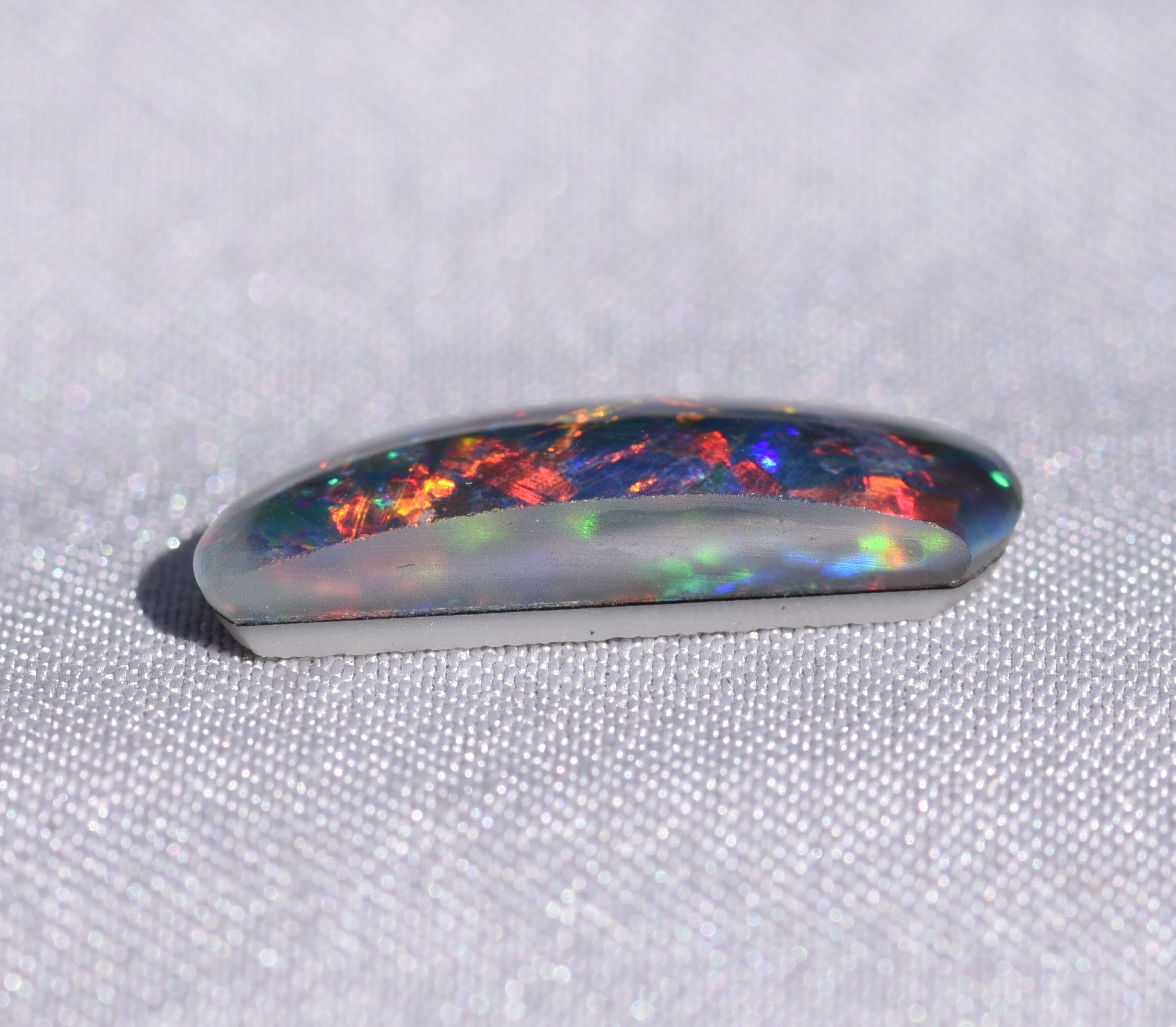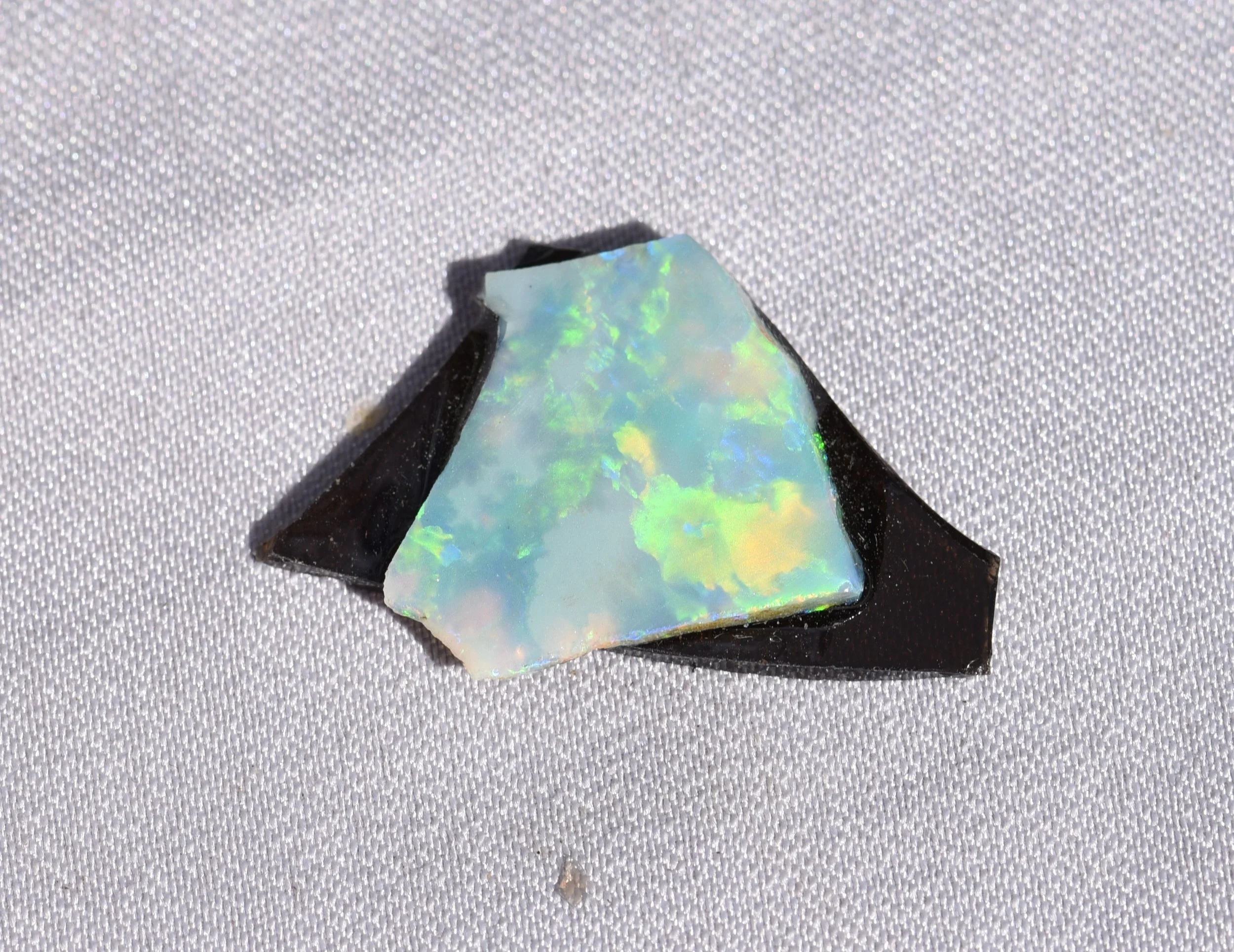Opal Academy examines two very interesting specimens of ironstone boulder matrix opal.
Read MorePrecious black opal is an exquisite gemstone, opal is often referred to as “the Queen of Gems”
Read MorePrecious hydrophane opal is a variety of precious opal (opal that shows a play-of-colour) that is absorbent. Typically it absorbs water, however the porosity of the material also is indicative of the material being susceptible to absorbing other colouring agents. As such it poses a difficulty for gemmologists in identification procedures.
Read MoreBoulder opal is in most instances the name given to opal that occurs in ironstone concretions of varying sizes. When cut and polished with “the rock” is incorporated in the gemstone. In a nomenclature discussion this is determined to be defined as “Opal and rock”. This is the description given in the opal nomenclature which we continue to refer to in other blogs, and descriptions on the Opal Academy website.
Read MoreMatrix opal has been defined as “opal presented in one piece where the opal is intimately diffused as infillings of pores or holes between grains of the host rock in which it is formed”.
In the original nomenclature published in the Australian Gemmologist Volume 19, Number 12, 1997 which you can read in the literature section of the website, or you can check out the Nomenclature page here………
Read MoreEarlier this year and due in part to not being able to meet as everyone will say “covid19” I was approached by the Scottish Gemmological Association to give a presentation via “Zoom’ to the members for their usual annual conference. This was something significant and I was really privileged to do. The presentation , albeit with one or two “quirks” is available here for anyone to view. The presentation runs for about 40 minutes.
Read MoreThe study of opal gemmology follows the normal procedures of non-destructive gemmological testing. These procedures examine the observable qualities of gemstones which include the physical or mineralogical properties of opal and more particularly measurable observations of refractive index (RI), Specific Gravity (SG), examination under exposure of excitation Ultraviolet light, and Microscopic examinations of opal characteristics such as imperfections and inclusions. Advanced material science methods of examinations for gemmological purposes is also beginning to become a necessity for the modern gemologist
Read MoreBy Gemmological definition, a natural opal is an opal that has been mined or found and comes out of the ground, from a natural environment. At present there are two geological variations of Natural Opals. (See discussion of Geological Occurrences). We have natural opals that occur in or are associated with rocks that are of a sedimentary origin, and natural opals that occur or are associated with rocks of a volcanic origin. This distinction is difficult and eventually Scientific investigations will become much more definitive. However for now these two ‘environments’ provide us with a suitable distinction.
Read MoreThe first attempt at manufacturing synthetic opal was made soon after the determination of the structure of opal in 1964 Sanders. Details of the procedure used to first synthesise opal are preserved in the original patent documents registered by the CSIRO in Australia, Great Britain and the USA during 1964. The original patents for the synthesis procedure were finally accepted some seven years later, on October 11th 1971.
Read MoreTriplet opals then are an artificial opal that is constructed from three pieces, in someways a triplet opal is just a doublet opal that has had another piece of material adhered to the top. So to create a Triplet opal all you need to do is adhere a clear or transparent material to over the top of the “opal” layer! As with the black material used as the base of a doublet opal, the clear layer over the top can be any material that is clear and transparent. Again it may be glass, plastic or anything else.
Read MoreDoublet opals come in two basic forms, a doublet of two pieces to imitate a black opal, or a doublet of two pieces to imitate a boulder opal. In the case of a doublet imitating “Black opal” the doublet usually consists of a thin laminate of “opal” glued or adhered to a black substrate of some material (the substrate can be be anything that is black, a few examples may be black potch opal, or black glass, or something painted black), anything black will do!
Read MoreSoon after the ordered, sphere-based structure of opal was revealed by CSIRO scientists, innovative potential synthesisers of this material started to postulate the various methods by which synthetic opals could be manufactured. All that was needed were suitably sized spherical particles of a suitable transparent medium. In fact, any transparent material capable of being flocculated and deposited into a three-dimensional ordered spherical array would be suitable for producing imitation opal; provided the spheres produced were of suitable size and optical transparency, and that they were arrayed in the appropriate Bragg relationship.
Read MoreChip opals are a little different in their construction, usually the opal component (again either natural opal or imitation opal) is encapsulated into a some form of envelope. The opal chips are mixed together, usually with a resin based material and then contained in some sort of capsule. The chips can be tightly packed, or just loosely packed depending on the type and effect to be obtained.
Chip opals are found to imitate all three of the natural opal varieties, light opal, Black opal and boulder opal.
Read More















